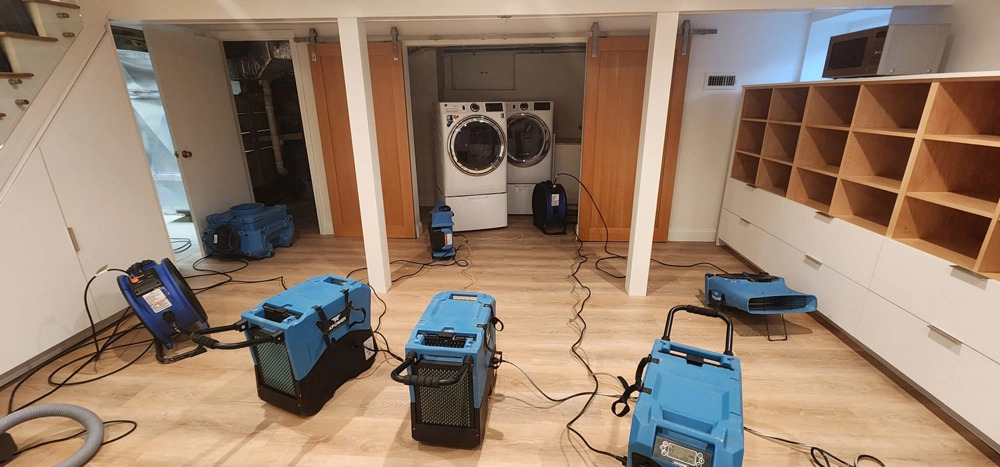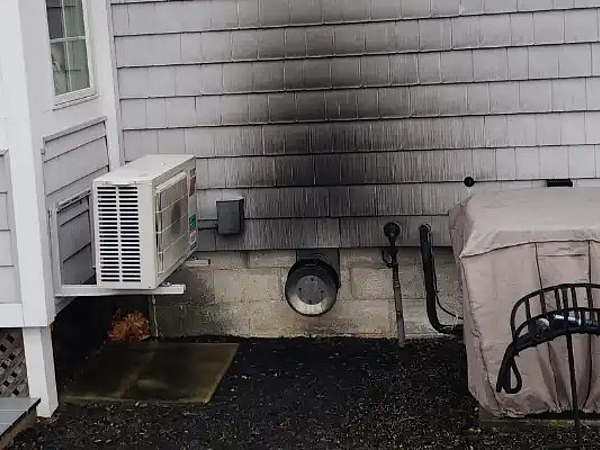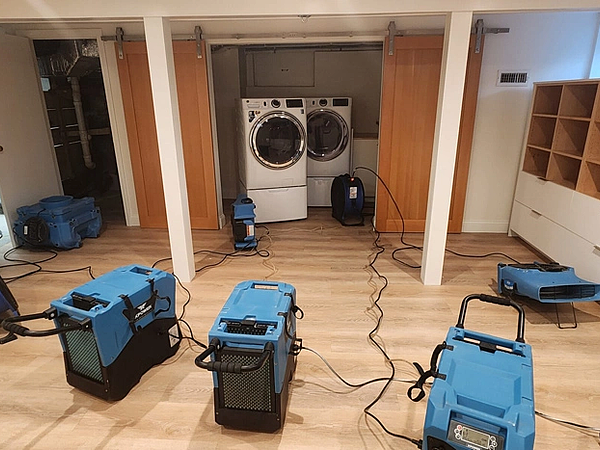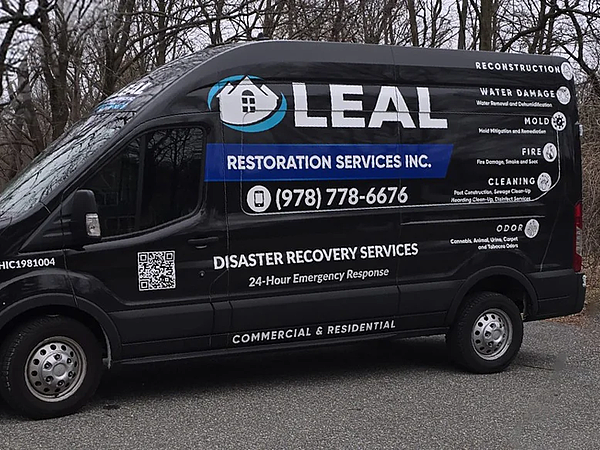Flood Damage vs. Water Damage – What's the Difference?
Water damage hits different when it's from inside versus outside your house. A broken pipe or leaky roof might mess up a room or two, but floodwater from rivers, storms, or melting snow can take out entire blocks. This matters for cleanup, insurance, and health risks - it all depends on where the water started.

- Flood sources:
- Overflowing rivers and streams
- Storm surge from hurricanes or nor’easters
- Relentless rain that drains nowhere
- Snow melt that turns streets into rivers
- Water damage sources:
- Burst or frozen pipes
- Leaking dishwashers, water heaters, or washing machines
- Roof leaks after a storm
- HVAC system failures that drip for days
Inside water problems are simple to fix - you spot the leak, stop it, and clean up. But floods? They bring mud, waste, and bacteria into your home. At Leal Restoration Services, we know each case needs its own plan. Our team handles both types of damage, getting your home back to normal fast.
Contamination and Health Risks
Floodwater is never just water. It drags in everything it touches: sewage, oil, chemicals, trash, and bacteria. Step into a flooded basement after a storm, and you’re wading through more than rain. The smell hits first. Then you see the debris. Every surface is suspect. Floors, walls, furniture, and even the air can carry hidden threats. Mold starts growing fast. Bacteria thrive in the damp. Skin contact can cause rashes. Breathing in spores or fumes triggers headaches and worse.
Water from a broken pipe is different. It’s usually clean at first. But even that turns dangerous if it sits. Mold takes hold in less than two days. Wood swells. Drywall crumbles. But you’re not dealing with sewage or chemical runoff. That’s why storm damage restoration teams suit up for floods. Gloves, masks, and full-body protection aren’t optional. Flood cleanup in Massachusetts means handling the worst: raw sewage, fuel oil, pesticides, and whatever else the water picks up on its way inside.
- Floodwater brings:
- Sewage and bacteria
- Chemical spills from garages and streets
- Sharp debris and trash
- Mold spores in the air
- Water damage from inside:
- Clean or gray water at first
- Mold risk if not dried quickly
- Less risk of chemical or sewage exposure
Flood cleanup isn’t just about drying out. It’s about protecting everyone from what the water leaves behind. That’s why we use advanced safety protocols and equipment to ensure your property is truly safe after a flood event.
How the Building Takes the Hit
Floods don’t just soak carpets. They push against foundations, seep into crawl spaces, and warp everything they touch. Water pressure cracks basement walls. Floors buckle. Doors jam. The force of moving water shifts entire structures. After a flood, you find silt in every corner. Insulation stays wet. Mold grows behind walls. Electrical systems short out. Even after the water recedes, the damage lingers. Foundations weaken. Wood rots. Metal rusts. Mold keeps spreading until every inch is dry and sanitized.
Water damage from a burst pipe usually stays in one area. The ceiling stains. The floor warps. Cabinets swell and split. But the structure holds. The cleanup is targeted. The risk of collapse is low. Flood damage is a different situation. It’s widespread, deep, and often hidden. Mold damage issues show up weeks later. Foundations need inspection. Sometimes, entire sections of drywall, flooring, and insulation must go. The building needs a full check, top to bottom. Our restoration professionals know how to spot these hidden dangers and address them before they become bigger problems.
Insurance Realities
Insurance doesn’t treat all water the same. Most homeowners policies cover sudden water damage from inside: pipes, appliances, or roof leaks. Flood damage is almost always excluded. That means no help from your regular policy when the river rises or the street floods. Flood insurance is a separate policy. It comes from the National Flood Insurance Program or private companies. Without it, you pay out of pocket for every ruined wall, floor, and appliance. Many property owners in Massachusetts find out too late. The water comes in, and the insurance adjuster says no. That’s why knowing the difference matters. Disaster recovery situations get complicated fast when coverage gaps appear.
- Homeowners insurance covers:
- Burst pipes
- Leaking appliances
- Sudden roof leaks
- Flood insurance covers:
- Rising water from outside
- Storm surge
- Overflowing rivers and streams
Without the right policy, flood victims face huge bills. Repairs, replacements, and even temporary housing come out of pocket. The paperwork is different. The process takes longer. The stakes are higher.
What Restoration Really Takes
- Flood restoration steps:
- Remove standing water
- Sanitize all surfaces
- Remove contaminated materials
- Dry out structure completely
- Test for mold and bacteria
- Repair and rebuild as needed
- Water damage restoration steps:
- Extract water
- Dry affected area
- Repair damaged materials
- Monitor for mold
Get Expert Flood Damage Help Now
Leal Restoration Services delivers rapid, professional flood and water damage restoration across Massachusetts. Call us at 978-778-6676 or contact us for immediate assistance.
‹ Back








